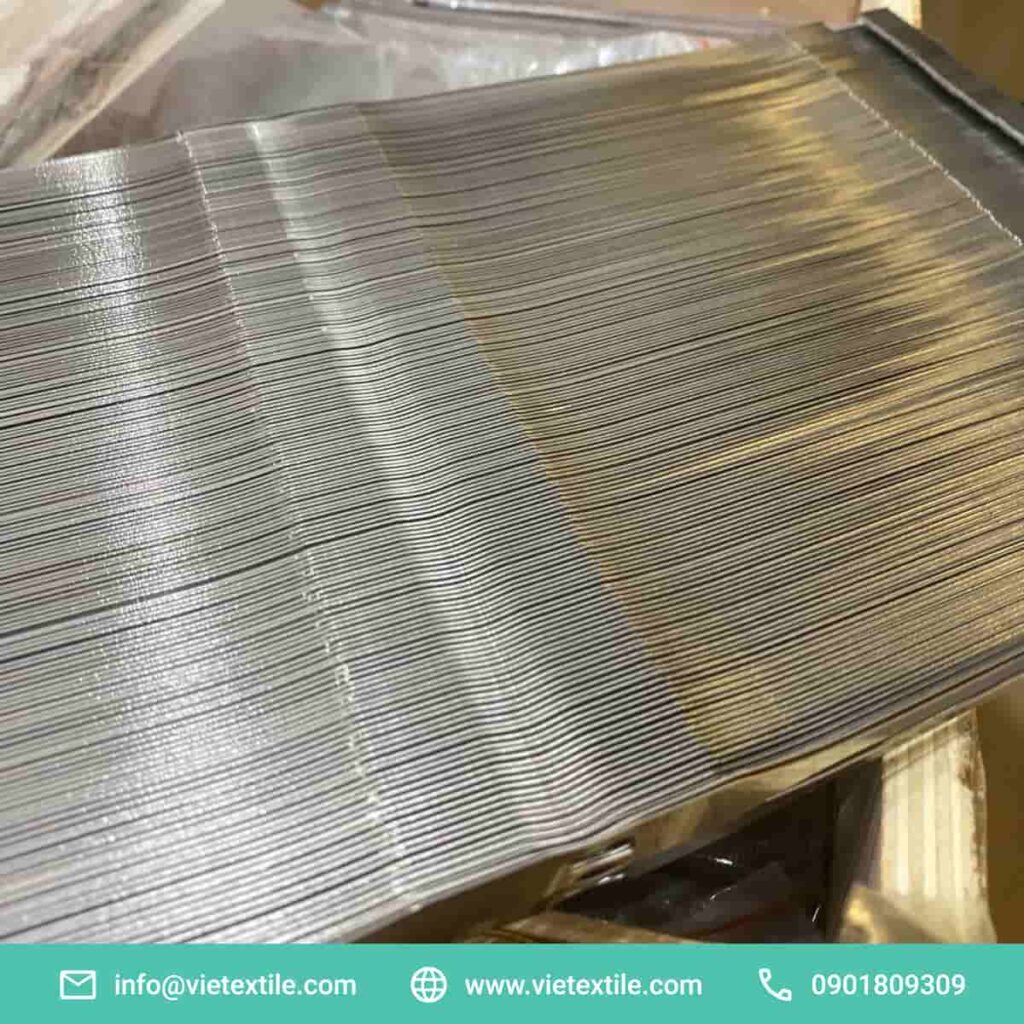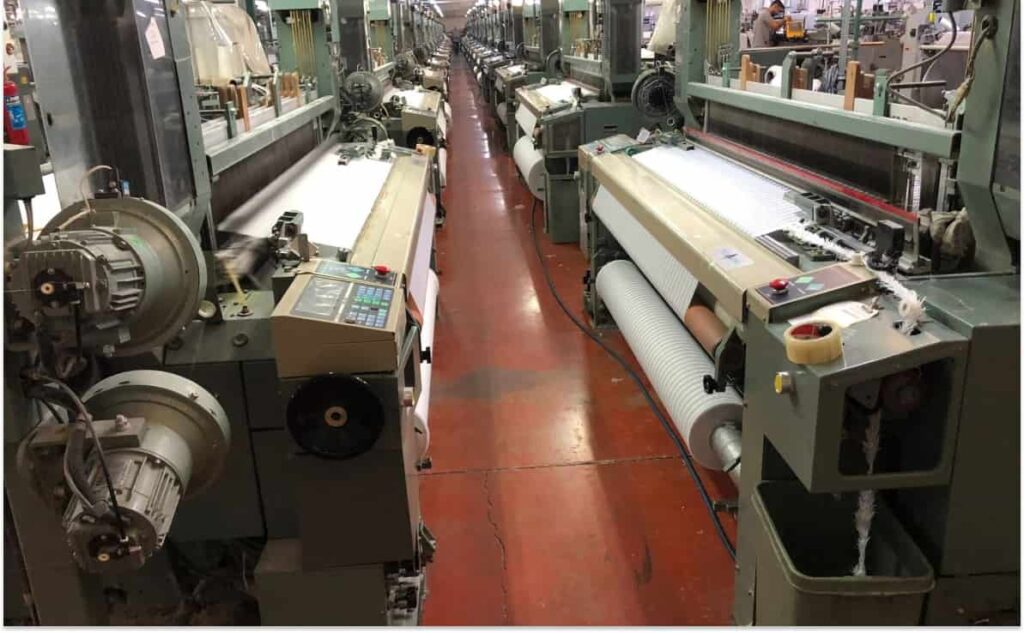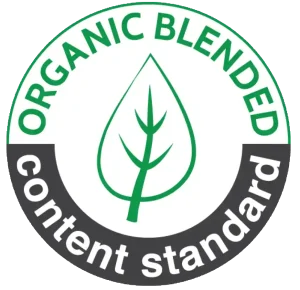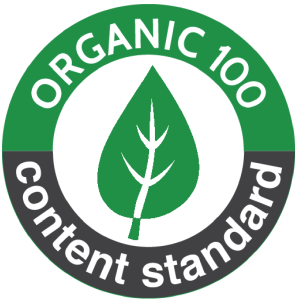In the modern textile production environment, the decision to choose loom spare parts must be based on precise technical factors. Specifically, Picking Stick Selection by Yarn Type is key to ensuring machine productivity, reducing yarn breaks, and improving the quality of finished fabric.
Each type of yarn—from natural cotton, sensitive viscose, to synthetic polyester—possesses distinct physical and mechanical properties, demanding a type of picking stick with perfect compatibility. This article from VieTextile provides in-depth guidance so you can perform Picking Stick Selection by Yarn Type in the most scientific way.
The Vietnamese textile and garment industry is aiming for the production of high-quality products that can compete in the international market. To achieve this, optimization must begin with the smallest details in the production process. The loom picking stick, although a small spare part, acts as the main impulse transmission component, determining the stability of the shuttle and the integrity of the warp threads throughout the weaving cycle.
The biggest challenge for production managers is how to balance high machine speed and low break rates, especially when dealing with a variety of raw materials. Mistakes in Picking Stick Selection by Yarn Type can lead to serious consequences: a picking stick that is too rigid causes high friction, leading to heating and breaking of synthetic fibers, while a picking stick that is too soft or less elastic cannot control the tension of cotton threads at high speeds.
VieTextile, with long-term experience in supplying genuine spare parts, clearly understands the importance of material compatibility. In this guide, we will delve into the unique properties of cotton, polyester, viscose, and common blended yarns. From there, we will provide technical criteria and specific recommendations to help you execute the Picking Stick Selection by Yarn Type accurately, ensuring continuous operational efficiency and superior fabric quality.

1. The Scientific Basis of Picking Stick Selection by Yarn Type
Nội dung tóm tắt
ToggleBefore diving into each yarn type, it is important to understand why the picking stick material greatly influences the woven yarn. The transmission mechanism of the picking stick generates force, speed, and friction, all of which directly affect the tension and physical structure of thousands of warp threads. Picking Stick Selection by Yarn Type aims to balance these factors, protecting the yarn from thermal and mechanical damage.
1.1. Concept of Loom Picking Sticks and Material Classification
The loom picking stick, also known as the shuttle propelling belt, is a flexible component connecting the loom’s main drive mechanism to the shuttle (or the weft insertion mechanism). Its role is to transmit the shuttle’s decisive propulsion force and simultaneously absorb the impulse when the shuttle is brought to a stop.
Picking stick materials are divided into three main groups:
- Traditional Leather: Typically used for lower-speed looms, offering a certain degree of flexibility but lower durability and heat resistance.
- Synthetic Rubber/Polymer: More common, offering high mechanical strength, but careful consideration is required regarding the coefficient of friction and anti-static capability.
- Composite/High-Technology Materials: Recommended by VieTextile, these include layers of synthetic materials (often Kevlar, Carbon, or special Polymer-coated reinforced fibers) to optimize tensile strength, elasticity, and heat resistance. This is the ideal choice when high-quality yarn or high-speed weaving requires precise Picking Stick Selection by Yarn Type.
1.2. Influence of Friction Coefficient and Picking Stick Hardness
The friction coefficient of the picking stick is a factor that directly generates heat and wears down the yarn surface. When implementing Picking Stick Selection by Yarn Type, manufacturers must note:
- Sensitive Fibers (such as silk, viscose): Require a picking stick with a super-smooth surface and a low friction coefficient to avoid scratches or fiber fluffing.
- Coarse Fibers (such as cotton, spun yarns): Can tolerate a moderate friction coefficient, but must ensure high durability to withstand abrasion.
The hardness (Shore Hardness) of the picking stick affects its ability to absorb impulse. A picking stick that is too hard will transmit a strong impulse, easily breaking brittle fibers or fibers with low elongation. Conversely, ideal hardness helps stabilize shuttle speed, creates uniform tension for the weft yarn, and reduces pressure on the warp threads.
1.3. The Importance of Controlling Temperature Impact on Yarn
Heat generated by friction is the greatest enemy of synthetic fibers like Polyester and Nylon, as they have low melting points. When the yarn contacts a hot picking stick or machine parts, the fiber can degrade, weaken, or even melt, causing mass yarn breaks.
Do đó, khi chọn Picking Stick Selection by Yarn Type for synthetic fibers, ưu tiên phải là các vật liệu composite có khả năng tản nhiệt cực tốt hoặc có lớp phủ chống nhiệt độ cao. Investment in genuine picking sticks ensures the material is tested to maintain a stable temperature in a continuous, high-speed operating environment.
2. Selection Criteria for Cotton and Viscose Picking Sticks (Natural and Semi-Synthetic Fibers)
Cotton and Viscose (Rayon) fibers represent the group of materials originating from natural or semi-synthetic sources. They generally have good dry tensile strength but are highly sensitive to changes in moisture and surface friction. Picking Stick Selection by Yarn Type for this group requires special consideration for material stability and softness.
2.1. Properties of Cotton Fiber and Mechanical Strength Requirements
Cotton is the most commonly woven fiber. Its characteristic is high strength, but it tends to fuzz easily and generate fiber dust during the weaving process.
- Requirement for the Picking Stick: Needs a picking stick with high mechanical strength that can withstand the significant friction generated when weaving cotton.
- Material Solution: Multi-layer composite picking sticks or specially treated high-grade leather. The material surface should not be too rough to avoid further peeling of fibers on the surface.
- Benefit of Correct Selection: Minimizes the accumulation of fiber dust on the picking stick and machine parts, thereby extending continuous operation time before machine cleaning is necessary.
2.2. Properties of Viscose Fiber and Moisture Challenges
Viscose (artificial silk, Rayon) is a semi-synthetic fiber known for its softness and high moisture absorption capacity. The biggest challenge when weaving Viscose is that its strength decreases significantly when wet or in high-humidity environments.
- Requirement for the Picking Stick: Must have absolute dimensional stability and not be affected by moisture or sizing agents. The picking stick must ensure no change in length or elasticity, which could instantly change yarn tension.
- Material Solution: Water and chemical-resistant Polymer or Composite materials are optimal. It is strictly prohibited to use leather or moisture-absorbing picking sticks when implementing Picking Stick Selection by Yarn Type for Viscose.
- Technical Note: Viscose’s sensitivity requires the picking stick to transmit motion as smoothly as possible, avoiding any sudden vibrations.
2.3. Optimal Picking Stick Solutions for Cotton and Viscose
To meet both the requirements for mechanical strength (for Cotton) and physicochemical stability (for Viscose), VieTextile often recommends the following picking stick product lines:
- Abrasive-Resistant Series: Picking sticks coated with a special PU (Polyurethane) or Polymer layer, resistant to abrasion caused by cotton fibers, and easy to clean.
- Dimensionally Stable Series: Uses a non-stretching composite core, helping to maintain accurate transmission force, which is crucial when weaving Viscose yarn sensitive to tension.
When carrying out Picking Stick Selection by Yarn Type for cotton, prioritize spare parts with partial self-cleaning capability to reduce maintenance time and maximize the operating time of the loom.
3. Strategy for Picking Stick Selection by Yarn Type for Polyester and Synthetic Fibers (Filament Yarns)

Polyester, Nylon, Acrylic, and other synthetic fibers (often continuous filament yarns) are characterized by high tensile strength, minimal sensitivity to moisture, but extreme sensitivity to temperature and static electricity. These two factors require a completely different strategy for Picking Stick Selection by Yarn Type.
3.1. Properties of Polyester Fiber and Heat Generation Issues
Polyester tends to generate greater friction when rubbing against surfaces, and due to its insulating nature, the heat generated is not easily dissipated. High temperatures at the contact point (caused by a hot picking stick) can soften the Polyester fiber, leading to breaks or creating permanent defects in the fabric after dyeing.
- Requirement for the Picking Stick: Must have superior heat dissipation capabilities and an extremely low coefficient of friction.
- Anti-wear and Anti-heat Coating: The picking stick must be coated with materials resistant to wear under high temperatures.
3.2. Requirements for Anti-Static and Static Conductivity
Static electricity is an inherent problem when weaving synthetic fibers. Static electricity causes warp threads to attract each other, attracting dust and fibers, causing weaving failures and yarn breaks.
- Anti-Static Requirement: When choosing Picking Stick Selection by Yarn Type for Polyester, it is mandatory to select picking sticks with anti-static or conductive properties.
- Anti-Static Material: Advanced picking stick lines incorporate carbon particles or conductive compounds into the Polymer material. This helps neutralize the static charge generated during the transmission process, keeping the warp threads in equilibrium.
- RFI (Radio Frequency Interference) Limitation: Controlling static electricity also helps reduce electromagnetic interference (RFI) in the electronic machine environment, ensuring the accuracy of weaving sensors.
3.3. Advanced Composite Materials for Synthetic Fibers
To meet the demanding requirements of synthetic fibers, leading spare parts manufacturers have developed new-generation picking sticks.
- Carbon/Kevlar Fiber Core: Provides high tensile strength and dimensional stability under high temperatures.
- PTFE (Teflon) or UHMPE Coating: These are surface coatings with an extremely low friction coefficient, minimizing the heat generated when the shuttle moves.
- Multi-layer Structure Picking Stick: Designed to absorb force more uniformly, helping to reduce the impulse exerted on Polyester fibers, which have low elongation.
The Picking Stick Selection by Yarn Type for synthetic fibers is about finding the balance between the rigidity needed for efficient power transmission and the surface softness to protect the yarn from thermal friction.
4. Technical Approach for Picking Stick Selection by Yarn Type for Blended Yarns
Blended Yarns, such as T/C (Polyester/Cotton) or CVC (Cotton/Chief Value Cotton), combine the properties of both natural and synthetic fibers. This poses a more complex challenge in Picking Stick Selection by Yarn Type, as the picking stick must operate effectively with both material types.
4.1. Analyzing the Combined Characteristics of Blended Yarns
When weaving blended yarns, the warp and weft threads carry “contradictory” requirements. Ví dụ:
- Cotton Component: Prone to fuzzing and dust creation.
- Polyester Component: Sensitive to thermal friction and static electricity.
The chosen picking stick must be capable of handling both: resisting abrasion caused by cotton but providing good heat dissipation to protect polyester.
4.2. Selecting a Picking Stick that Balances Strength and Softness
For blended yarns, the principle of Picking Stick Selection by Yarn Type is to prioritize balanced, versatile materials:
- High Strength and Smooth Surface: Select a type of picking stick with a sturdy core (capable of handling the load of cotton/coarse fiber weaving) but with a super-smooth outer surface (to reduce thermal friction for polyester).
- Moderate Chemical/Moisture Resistance: Must ensure the picking stick is not deformed by moisture (affecting cotton) and still possess a certain anti-static capability (affecting polyester).
- Slight Self-Adjustment Capability: Although the picking stick cannot completely self-adjust, selecting a material with optimal elasticity helps absorb small differences in tension arising from the difference in elongation between cotton and polyester.
VieTextile always recommends picking stick lines specifically designed for blended yarn applications, often advanced Polymer compounds with a dual molecular structure, allowing for balanced performance.
4.3. Adjusting Loom Parameters When Using Picking Sticks for Blended Yarns
Picking Stick Selection by Yarn Type for blended yarns is not just about purchasing spare parts; it also involves adjusting loom parameters:
- Adjusting Picking Stick Tension: Tension needs to be set at a medium level, strong enough for stable shuttle propulsion (necessary for polyester’s rigidity) but not too tight to avoid breaking the cotton component.
- Controlling Environmental Humidity: Maintaining stable humidity in the factory is mandatory. Humidity that is too low increases static electricity (harming polyester); humidity that is too high reduces the strength of cotton. The selected picking stick must perform well under this controlled condition.
- Inspection Frequency: Because blended yarns create a complex combination of wear factors, the frequency of picking stick inspection and maintenance needs to be increased compared to weaving single fibers.
5. Optimizing Performance Through Picking Stick Selection by Yarn Type

Picking Stick Selection by Yarn Type is a strategic technical decision for risk management and overall performance optimization of a weaving mill. The right decision brings long-term benefits that far exceed the initial investment cost in genuine spare parts.
5.1. Direct Impact on Break Rates for Each Type of Yarn
The perfect compatibility of the picking stick will significantly reduce the yarn break rate.
- Reducing Cotton/Viscose Breaks: By providing smooth, non-jerking transmission force, genuine picking sticks protect the yarn from mechanical shock, reducing breaks due to over-tensioning.
- Reducing Polyester/Synthetic Breaks: By controlling friction and temperature, high-quality picking sticks prevent the thermal degradation of the fiber, reducing breaks due to physical factors.
- Economic Benefit: Every yarn break causes machine stoppage; reducing this rate means increasing the effective operating time of the loom and saving intervention labor costs.
5.2. Impact on Finished Fabric Quality and Structure
The quality of the picking stick is directly related to the uniformity of the woven fabric:
- Uniform Weft Density: A stable picking stick ensures the shuttle’s speed and force are consistent, so the weft yarn is inserted with uniform density across the entire fabric width, avoiding errors in uneven thickness/thinness.
- Tension Control: Genuine picking sticks maintain constant transmission force, helping prevent the weft yarn from slackening or becoming over-taut, thereby ensuring the fabric’s strength and uniform structure.
- Minimizing Surface Defects: Picking sticks with smooth surfaces, especially important when weaving filament yarns, prevent scratches or fiber fuzzing, protecting the perfect appearance of the fabric.
5.3. The Role of the Genuine Supplier (VieTextile) in Selection
Picking Stick Selection by Yarn Type requires a deep understanding of materials and weaving technology. VieTextile is not just a picking stick supplier but also a technical consulting partner:
- Yarn Material Analysis: We support the analysis of customers’ yarn weaving properties (strength, elongation, heat resistance) to recommend the most suitable picking stick.
- Supply of OEM-Standard Products: Ensuring the picking stick’s technical specifications (size, hardness, durability) are 100% compatible with each loom model and the requirements of the yarn type.
- Adjustment Support: Providing technical guidance or on-site service to adjust the tension of new picking sticks, ensuring optimal operating performance right from the start.
6. Frequently Asked Questions About Picking Stick Selection by Yarn Type (FAQ)
This section answers the most common questions related to Picking Stick Selection by Yarn Type and maintenance.
6.1. Can I use the same type of picking stick for both cotton and polyester?
Answer: Technically, yes, but it is not recommended. If unavoidable, you should choose a balanced composite picking stick (often with a low-friction coating and anti-static properties) to minimize risk for polyester and enhance durability for cotton. However, performance will not be as optimized as when performing a separate Picking Stick Selection by Yarn Type.
6.2. How does an anti-static picking stick work?
Answer: Anti-static picking sticks are manufactured by adding conductive particles (like carbon) to the main material. These particles create a path for the static charge generated during the weaving of synthetic fibers (like polyester) to be neutralized or conducted to the ground, preventing charge buildup and yarn break incidents.
6.3. How do I know when a picking stick needs replacement?
Answer: A picking stick needs replacement when there are clear signs of wear on the surface, cracks, deformation, or, most importantly, when you notice a sudden increase in the yarn break rate with no other clear cause. Picking Stick Selection by Yarn Type and timely replacement will minimize machine downtime.
6.4. Is using cheap picking sticks for coarse fibers (cotton) cost-effective?
Answer: No. Cheap picking sticks often have poor mechanical strength and quickly wear down due to the friction of cotton fibers. This leads to more frequent replacement needs, increased maintenance costs, and machine downtime, causing much greater losses than investing in a genuine picking stick from the outset.
6.5. Do I need to adjust the picking stick tension when switching from cotton to viscose?
Answer: Yes. Viscose yarn is more sensitive to tension. Even with the appropriate Picking Stick Selection by Yarn Type, you should still adjust the picking stick tension slightly lower than for cotton to ensure smooth transmission and minimize the impulse impact on the viscose fiber.
6.6. Does VieTextile offer yarn material analysis services for Picking Stick Selection by Yarn Type?
Answer: Yes. VieTextile is ready to provide in-depth technical consulting and support to analyze customer yarn properties to give the most accurate recommendations on Picking Stick Selection by Yarn Type, maximizing production efficiency.
Picking Stick Selection by Yarn Type is a strategic technical decision. Don’t let poor-quality spare parts hinder your loom’s performance and fabric quality.
Contact VieTextile immediately for expert consultation and genuine loom picking stick lines, optimized for Cotton, Polyester, Viscose, and Blended Yarns:
Contact Information:
Hotline: 0901 809 309
Email: info@vietextile.com
Website: https://vietextile.com










